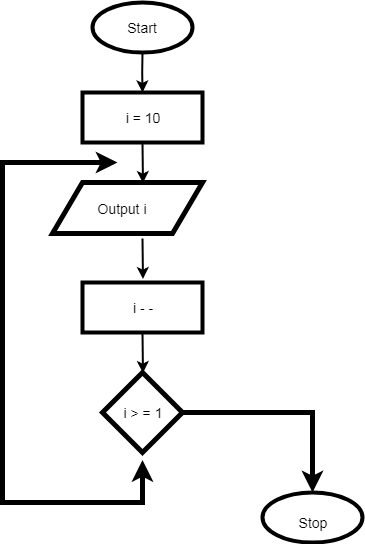Sum of Two Numbers
Algorithm
STEP 1: Start
STEP 2: Accept the first number a.
STEP 3: Accept the second number b.
STEP 4: Add a and b , and store in SUM.
STEP 5: Display the value of SUM.
STEP 6. Stop
Flowchart

Greatest among Two numbers
Algorithm
STEP 1: Start
STEP 2: Read Two numbers a and b.
STEP 3: Compare a and b.
If a is greater than b then print a otherwise print b.
STEP 4: Stop
Flowchart

First ten natural numbers
Algorithm
STEP 1: Start.
STEP 2: Initialize the variable count to one.
STEP 3: Display the variable count .
STEP 4: Increase variable count by one.
STEP 5: Check whether count variable exceeds 10.
If Yes, Go to Step 3, If No Go to step 6
STEP 6: Stop
Flowchart

Greatest among Three numbers
Algorithm
STEP 1: START
STEP 2: Read three numbers and store them in A , B, C
STEP 3: Is A > B
{Yes: Go to Step 6, No: Go to Step 4}
STEP 4: Is B > C
{Yes: Print B is greatest, No: Go to Step 5}
STEP 5: Print C is greatest and Go to step 8}
STEP 6: Is A > C
{Yes: Print A is greatest, No: Go to Step 7}
STEP 7: Print C is greatest and Go to Step 8
STEP 8: Stop
Flowchart

Area of Circle
Algorithm
STEP 1: Start
STEP 2: Read Radius ‘r’.
STEP 3: Store 3.14 in the value of pi.
STEP 4: Find area of circle (Area = pi * r * r)
STEP 5: Display Area.
STEP 6: Stop
Flowchart

Simple Interest
Algorithm
STEP 1: Start
STEP 2 : Read Principal, Time and Rate (P , T, R)
STEP 3: Calculate the Simple Interest (SI = P * T * R / 100)
STEP 4 : Display SI
STEP 5 : Stop
Flowchart
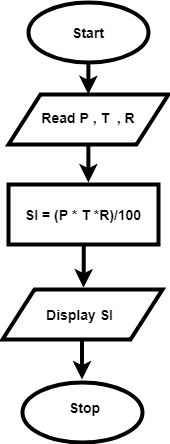
Print the table of a given number N up to ten terms.
Algorithm
STEP 1: Start
STEP 2: COUNT = 0
STEP 3: Read the value of number in N
STEP 4: COUNT = COUNT + 1
STEP 5: Compute N * COUNT ;
STEP 6: Is count < = 10
{Yes: GO TO STEP 4, No: GO TO STEP 7}
STEP 7: STOP
Flowchart
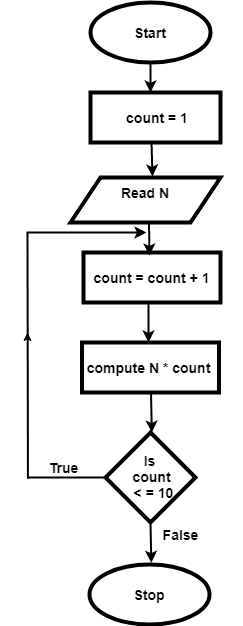
Sum of first 50 natural numbers
Flowchart

Positive, Negative or Zero
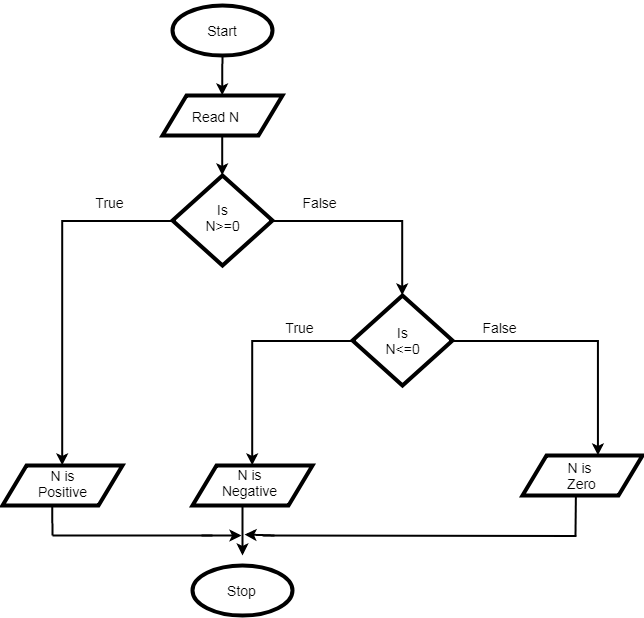
Even or Odd

Print 1 to 10
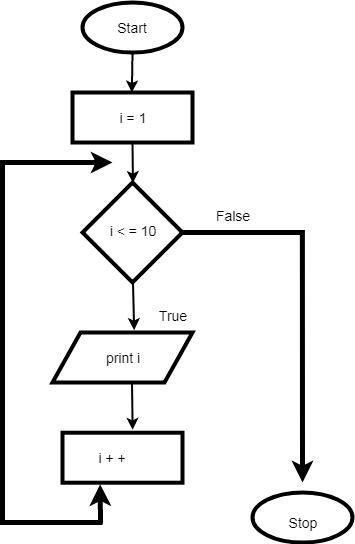
Print 10 to 1
